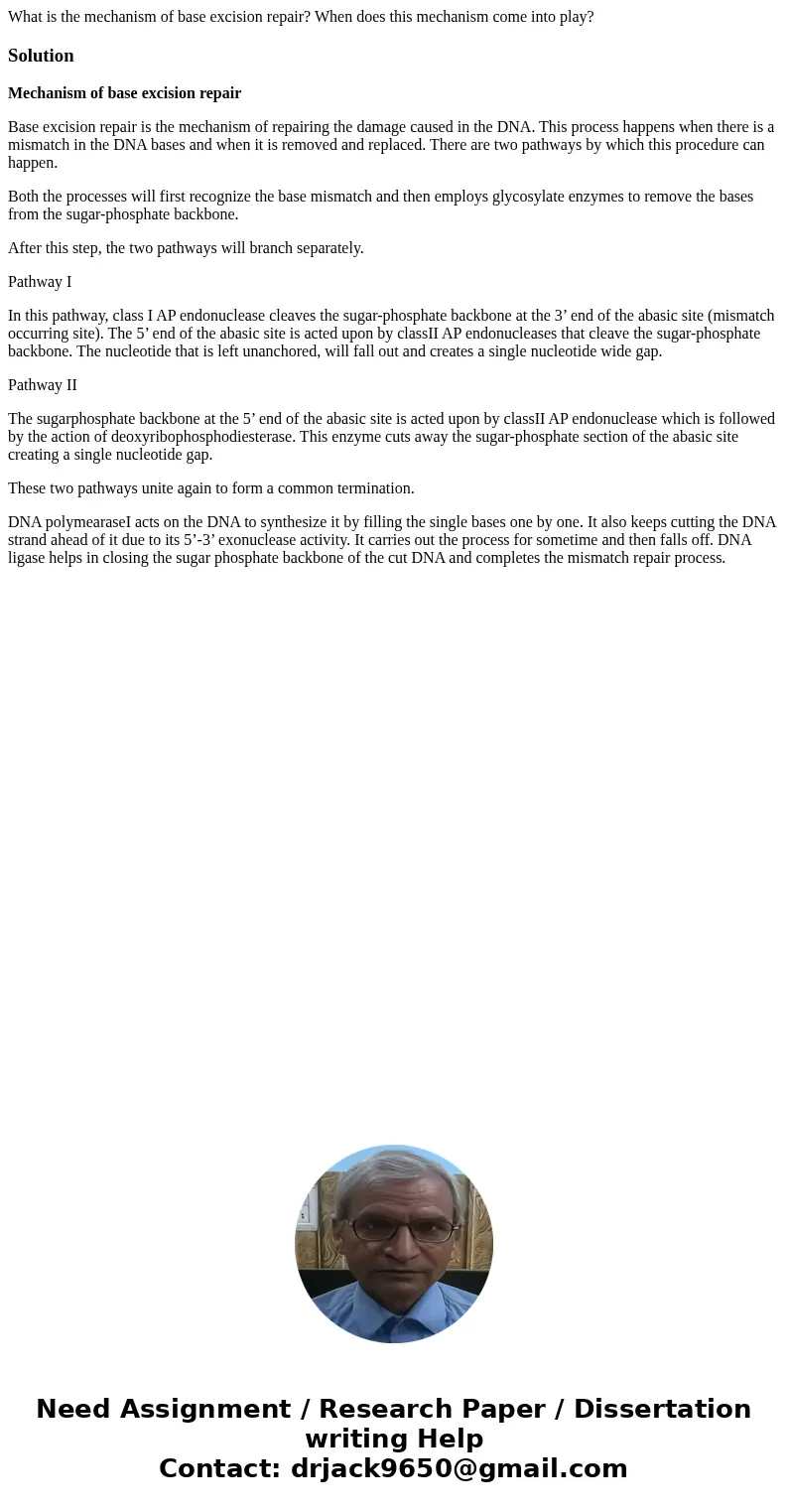What is the mechanism of base excision repair When does this
What is the mechanism of base excision repair? When does this mechanism come into play?
Solution
Mechanism of base excision repair
Base excision repair is the mechanism of repairing the damage caused in the DNA. This process happens when there is a mismatch in the DNA bases and when it is removed and replaced. There are two pathways by which this procedure can happen.
Both the processes will first recognize the base mismatch and then employs glycosylate enzymes to remove the bases from the sugar-phosphate backbone.
After this step, the two pathways will branch separately.
Pathway I
In this pathway, class I AP endonuclease cleaves the sugar-phosphate backbone at the 3’ end of the abasic site (mismatch occurring site). The 5’ end of the abasic site is acted upon by classII AP endonucleases that cleave the sugar-phosphate backbone. The nucleotide that is left unanchored, will fall out and creates a single nucleotide wide gap.
Pathway II
The sugarphosphate backbone at the 5’ end of the abasic site is acted upon by classII AP endonuclease which is followed by the action of deoxyribophosphodiesterase. This enzyme cuts away the sugar-phosphate section of the abasic site creating a single nucleotide gap.
These two pathways unite again to form a common termination.
DNA polymearaseI acts on the DNA to synthesize it by filling the single bases one by one. It also keeps cutting the DNA strand ahead of it due to its 5’-3’ exonuclease activity. It carries out the process for sometime and then falls off. DNA ligase helps in closing the sugar phosphate backbone of the cut DNA and completes the mismatch repair process.

 Homework Sourse
Homework Sourse